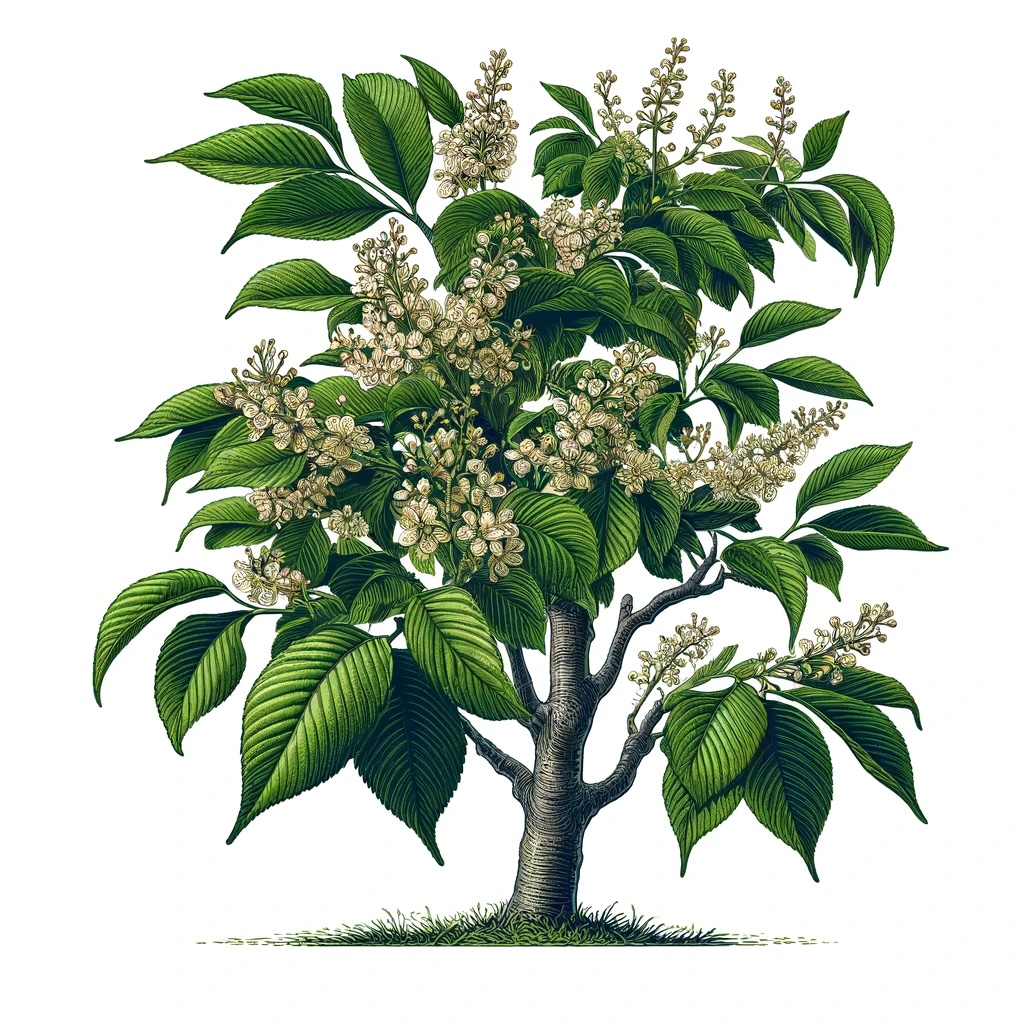This website contains affiliate links for products I use and love. If you take action (i.e. subscribe, make a purchase) after clicking a link, I may earn some tea money, which I promise to drink while creating more helpful content like this.
- Home
- Immune System
- Immune System Physiology
Immune System Physiology Explained: A Deep Dive with Herbal Ella
Immune System Physiology
Welcome to a deeper dive into the marvels of our body's immune system. Here at Herbal Ella, we often speak of the ancient wisdom in nature and our bodies, and few systems exemplify this wisdom as profoundly as the immune system.
The Vital Role of the Immune System
Understanding the immune system's physiology isn't just for scientists or health professionals—it's for anyone who cares about their health and wellbeing. Our immune system is an intricate network that not only defends against illness but also maintains a delicate balance in our body. It's like a finely tuned orchestra where each component plays a critical role in harmony with the others.
Complexity and Significance of Immune Components
Every organ, cell, and molecule within the immune system has a specific purpose, contributing to our body's overall health. From lymph nodes, which act as filters for harmful substances, to white blood cells, the valiant warriors against pathogens, each element is essential. Even aspects like our skin and respiratory system play significant roles in this complex defense network.
The Interplay of Organs and Cells in Immunity
Consider the intricate dance between different immune cells, the way our body's structures like the spleen and stomach contribute to immune functions, and how all these elements work together to create a robust defense system. It's a fascinating world, where everything from the food we eat to the air we breathe impacts our immune health.
Through this exploration, we invite you to appreciate not only the complexity but also the beauty of your immune system. As we delve into the specifics of how it functions, remember that this knowledge is a stepping stone towards better health and a deeper connection with your body's natural wisdom.
The Major Players in Immune System Physiology
Lymph Nodes: The Body's Filtration System
- Role: Lymph nodes are small, bean-shaped structures located throughout the body. They act as critical filtration points within the lymphatic system.
- Function: These nodes trap and destroy harmful substances, including germs, that are carried in through lymph fluid. They are home to immune cells like lymphocytes and macrophages, which play a key role in fighting infection.
Respiratory Organs: The Breath of Life and Defense
- Role: The respiratory system, including the lungs, is vital for oxygenating our blood and filtering out harmful substances.
- Function: The lining of the lungs contains specialized white blood cells called microphages. These cells engulf and destroy foreign particles, playing a crucial role in defending against airborne pathogens.
Skin: The First Line of Defense
- Role: Our skin is the external-facing barrier of the immune system.
- Function: It works to expel pathogens and detoxify the body through pores. In case of injury, the skin's defenses include inflammation and scabbing to prevent bacteria from entering the body.
White Blood Cells: The Immune Warriors
- Role: White blood cells are the primary defenders against germs like bacteria and viruses.
- Variety and Functions: There are several types of white blood cells, each with different lifespans and functions. Some produce antibodies, which are special proteins that recognize and help eliminate foreign materials.
Spleen: The Blood's Guardian
- Role: The spleen acts as a filter for blood and is a key component in the immune system.
- Function: It recycles old red blood cells, stores platelets and white blood cells, and identifies and responds to microorganisms in the blood, including those causing pneumonia and meningitis.
Stomach: The Acidic Barrier
- Role: The stomach plays a significant role in immune defense.
- Function: Stomach acid kills most harmful bacteria present in our food, preventing them from entering our bloodstream and causing infection.
Immune System Physiology: The Three Lines of Defense
Physical Barriers: Nature's First Line of Defense
The immune system's first line of defense is made up of physical barriers that prevent pathogens from entering our body. This includes:
- Skin: Acting as a resilient barrier against external invaders.
- Mucous Membranes: Found in the nose, throat, and lungs, trapping pathogens.
- Saliva and Tears: Containing enzymes that break down bacteria.
- Sweat and Earwax: Creating environments that deter the growth of harmful microorganisms.
Inflammatory Response: The Immune System's Rapid Reaction Force
When a pathogen breaches these physical barriers, the body's second line of defense kicks in – the inflammatory response. This includes:
- Rushing Blood Cells: The body increases blood flow to the affected area, bringing in white blood cells and nutrients needed for repair.
- Heat Generation: Increasing the temperature at the site of infection, which helps in destroying pathogens.
- Fever: A body-wide response to infection, creating an environment less hospitable to many pathogens.
Mechanical Barriers: Active Defense Mechanisms
The body also employs mechanical actions to expel pathogens. These include:
- Coughing and Sneezing: Forcefully expelling air and particles from the respiratory tract.
- Vomiting: Expelling ingested pathogens from the stomach.
- Urination and Defecation: Flushing out toxins and pathogens from the body.
The Cellular Warriors
The Diverse World of White Blood Cells
- White blood cells (WBCs), or leukocytes, are the immune system's primary cellular defenders. Each type of white blood cell plays a unique role in immune defense.
- Neutrophils: These are the most common type of WBCs and are among the first responders to microbial infection.
- Lymphocytes: Including B cells, T cells, and natural killer cells, they create and implement the body's immune response.
- Monocytes: They have a longer lifespan than many other WBCs and help break down bacteria.
- Eosinophils: They combat multicellular parasites and are also involved in allergic reactions.
- Basophils: They are involved in allergic responses and parasite infections, releasing histamine and other chemicals.
Lifespans and Functions
- The lifespan of WBCs varies widely. Some live for only hours or days, while others can live much longer. This variance ensures a dynamic and responsive immune system.
- Each type of WBC has a specific role in immune defense, from identifying pathogens to creating antibodies.
Antibodies: The Immune System's Precision Tools
- Antibodies are proteins used by the immune system to identify and neutralize foreign objects like bacteria and viruses.
- Each antibody is unique and matches a specific antigen as part of the adaptive immune response.
New White Blood Cell Formation
- New WBCs are continuously formed, mainly in the bone marrow. The process is called hematopoiesis.
- The spleen, thymus, and lymph nodes also contribute to the formation and maturation of certain white blood cells, particularly lymphocytes.
Bacteria vs. Viruses
Understanding the Distinctive Nature of Bacteria and Viruses
In our exploration of the immune system, it's crucial to understand the difference between the two main types of pathogens it combats: bacteria and viruses. Their distinct characteristics influence how our immune system responds to each.
Bacteria: Independent Microorganisms
- Nature: Bacteria are single-celled, living organisms that can survive and reproduce on their own. They can be found in various environments, both inside and outside the human body.
- Infections Caused: Bacterial infections include conditions like strep throat, food poisoning (such as E. coli or Salmonella), Staphylococcus infections, and urinary tract infections.
- Immune Response: The immune system combats bacterial infections using various tactics, including the production of antibodies, phagocytosis by white blood cells, and the complement system.
Viruses: The Intracellular Invaders
- Nature: Viruses are much smaller than bacteria and are not considered living organisms outside of a host. They require a host's cells to survive and replicate, hijacking the host's cellular machinery.
- Infections Caused: Viral infections include diseases like chickenpox, influenza, herpes, HIV/AIDS, HPV, mumps, measles, rubella, shingles, and the coronavirus.
- Immune Response: Fighting viruses involves a different strategy as these pathogens reside inside the body's cells. The immune system employs specialized cells like cytotoxic T-lymphocytes and produces interferons to disrupt viral replication.
The Balance in Combatting Pathogens
Understanding the differences between bacteria and viruses is key to appreciating how the immune system tailors its response. While antibiotics can be effective against bacteria, they are useless against viruses. This difference underscores the importance of accurate diagnosis and treatment.
Supporting Immune System Health
The Foundation of Immune Resilience: Lifestyle and Diet
We understand that supporting immune system health goes beyond just addressing illness. It involves cultivating an environment where the immune system can thrive, and this is deeply intertwined with our lifestyle choices.
Diet: The Nutritional Cornerstone
At Herbal Ella, we embrace the ancient wisdom of "Food as Medicine," recognizing that what we eat profoundly impacts our health, especially our immune system. This concept, deeply rooted in centuries of traditional healing practices, highlights the importance of dietary choices in maintaining and enhancing our body's natural defense mechanisms. By nourishing ourselves with the right foods, we're not just feeding our bodies; we're healing and fortifying them. Let's explore how integrating nutrient-rich foods into our daily diet can be a powerful tool for supporting a robust immune system.
- Importance of Nutrients: A diet rich in vitamins, minerals, and antioxidants is essential for robust immune function. Foods like fruits, vegetables, nuts, and seeds are packed with nutrients that support immune health.
- Balanced Eating: Incorporating a variety of whole foods ensures a balanced intake of essential nutrients. Avoiding processed foods, excessive sugar, and unhealthy fats is also crucial.
Stress Management: The Emotional Aspect
- Understanding Stress Impact: Chronic stress can suppress immune function, making us more susceptible to illness. Effective stress management is thus key to maintaining a healthy immune system.
- Relaxation Techniques: Practices like meditation, yoga, deep breathing exercises, and spending time in nature can significantly reduce stress levels.
Herbal Support for the Immune System
As herbalists, we value the power of plants in supporting immune health. Here are a few herbs known for their immune-boosting properties:
- Elderberry: Widely recognized for its immune-enhancing effects, especially during cold and flu season.
- Echinacea: Known for its ability to stimulate the immune system, making it a popular choice for fighting infections.
- Ginger: Offers antimicrobial and anti-inflammatory benefits, making it a versatile ally in immune support.
- Astragalus: Traditionally used to strengthen and regulate the immune system.
As we conclude our journey through the fascinating world of immune system physiology, it's evident that understanding this complex system is more than just a scientific endeavor. It's a crucial part of our holistic health journey. The immune system, with its intricate network of organs, cells, and responses, stands as a testament to the incredible wisdom of our bodies.
By delving into the specifics of how our immune system operates, we gain not only knowledge but also a deep appreciation for the natural processes that keep us healthy. This understanding empowers us to make informed choices about our health and wellbeing. At Herbal Ella, we advocate for a holistic approach to health, where knowledge of immune physiology is complemented by natural and herbal remedies, balanced nutrition, and effective stress management.
We encourage you to embrace this holistic view. See your immune system not just as a guardian against illness, but as a harmonious system deeply connected to every aspect of your life. By nurturing your immune health through informed choices, you're taking a powerful step towards overall wellness and vitality.
Further Reading and Resources
To continue your exploration and deepen your understanding of immune system physiology, we have curated a selection of resources. These links provide more detailed information on specific aspects of immune physiology and related herbal studies:
- Herbal Actions Related to Immunity
- Ten Herbal Recipes for Immune Support
- Treating Common Immune-Related Conditions
- Immune System Essentials: Strengthening Your Health Naturally
We hope these resources will inspire and guide you on your path to wellness. Remember, the journey to understanding and supporting your immune system is a continuous one, and we are here to support you every step of the way.
The information provided on this website is for educational purposes only, and is not FDA approved. It is not to be considered health advice. Always do your own research and seek the guidance of a qualified healthcare practitioner before working with any herb. Herbal Ella is not liable for any action or inaction you take with the materials and information provided. Read here for more information.
Recent Articles
-
Wild Cherry Monograph: Wild Cherry: Nature's Respiratory Ally
May 02, 24 04:52 PM
Discover the healing potential of Wild Cherry with our comprehensive monograph. Explore its benefits and uses for respiratory health. -
DIY Herbal Remedies for Respiratory Health
May 02, 24 03:46 PM
Explore easy DIY herbal remedies for respiratory health with Herbal Ella. Learn to make teas, tinctures, and more to breathe better naturally -
Understanding the Respiratory System - Anatomy and Functions
May 02, 24 03:23 PM
Discover the respiratory system's anatomy and functions with clear visuals and simple explanations to keep you breathing healthily
* Privacy Policy * Disclaimer *










